Time and Ink: The Minimalist Devotions of Jacob El Hanani
The Torah has seventy faces, according to a famous rabbinic saying, and not all of them can be glimpsed simply by reading the words. Jewish mysticism has long tried to draw meaning from permutations of the Torah’s individual letters, believing that the Hebrew alphabet preexisted the universe. “Two thousand years before the creation of the world, the Creator gazed into the letters and played with them,” says the Zohar.
Even the shapes of the letters hold secret meanings. The first word in Genesis is bereishit, “in the beginning.” Why did God choose to begin the Torah with the letter bet, the second letter of the alphabet? A midrash explains that the letter was chosen because of its form:
Just as the bet is closed on all sides and open in front, so we have no right to inquire what is below, what is above, what is back, but only from the day that the world was created and thereafter.
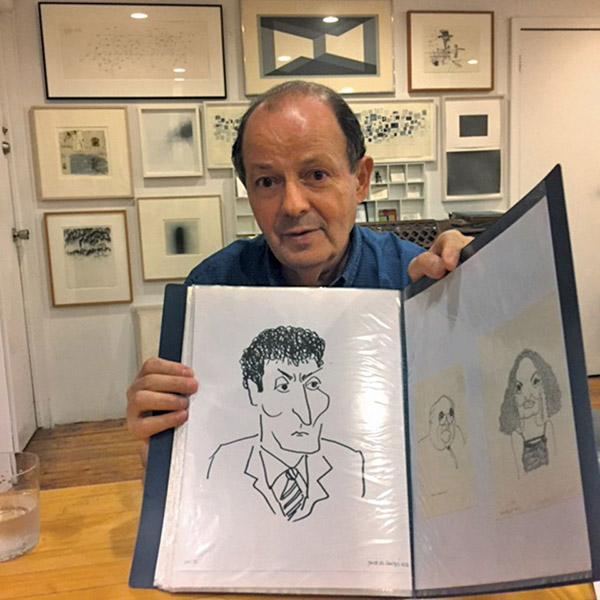
The artist Jacob El Hanani often uses Hebrew letters in his work, though he is neither a mystic nor a scribe. His abstract minimalist drawings conjure wavering networks and textures through the accretion of minute, hand-drawn lines. El Hanani arrived in New York when minimalism was flourishing among the artists drawn to Soho by the availability of cheap lofts, where they could work and (illegally) live. His studio was, and still is, on lower Broadway.
“The ’60s were clutter. The ’70s are very empty,” said Andy Warhol in his Philosophy, published in 1975. But El Hanani discovered that it is possible to maintain emptiness while suffusing it with marks and meanings—and Jewish tradition showed him the way. While Jewish themes and titles appear in the work of other minimalists such as Mark Rothko and Barnett Newman, El Hanani’s upbringing gives him access to a tradition that runs deeper than the occasional allusion. He was born in Casablanca, Morocco, in 1947 into a Jewish community that had ancient roots—there have been Jews in that country since Roman times—but lived modern, urban, Francophone lives.
El Hanani’s family moved to Israel in 1953, part of a mass migration that reduced Morocco’s Jewish population from some 250,000 in 1948 to just 2,000 today. His upbringing gave him a fluency in Jewish texts and ideas that continues to inform his work, even though he has now lived in New York twice as long as he lived in Israel.
Circle-Drawer (Honi Hame’aggel), which is one of El Hanani’s most ambitious and profound works, was completed just last year. From a distance, the canvas looks like a wash of grays, delicately transitioning between shades like patches of cloudy sky. Seen more closely, it reveals itself as an enormously complex mesh of tiny circles. Hand drawn, like all of El Hanani’s work, these circles are not perfectly round—not ball bearings from a machine but packed cells seen under a microscope.
The title, however, opens up a new, specifically Jewish dimension of meaning. Honi Hame’aggel—in English, Honi the Circle-Drawer—is the subject of a famous, theologically provocative story in the Talmud. During a serious drought, Honi issued a challenge to God: drawing a circle around himself in the dirt, he declared, “I take an oath by Your great name that I will not move from here until you have mercy upon Your children.” When a little rain began to fall, Honi complained that God wasn’t sending enough; when the rain grew dangerously strong, he complained that it was too much. Finally, God got it right, and the rain continued until Honi told God to stop. The Talmud itself isn’t quite sure what to make of this story. Issuing ultimatums to God is hardly an expression of the humility and piety that Judaism prizes, yet the fact remains that God did bow to Honi’s demand. As the head of the Jewish court complained, “Were you not Honi, I would have decreed that you be ostracized, but what can I do to you? You nag God and He does your bidding, like a son who nags his father.”
What does El Hanani mean by titling his own circle drawing after Honi? Is it only a witty allusion? Or is there a deeper similarity between the ancient sage and the modern artist, whose practice also rests on audacity, persistence, and faith? If El Hanani draws countless circles while Honi had to make only one, perhaps it’s a sign that God has become exponentially harder to reach.
Like many artists, El Hanani had to distance himself from home and tradition before he discovered how to put them to use. When he came to America in 1974, after studying at Tel Aviv’s Avni Institute of Art and Design and the École des Beaux-Arts in Paris, his work was figurative. (He is still a talented caricaturist, able to capture faces on the fly with a few strokes.) It was in New York that El Hanani developed what I have heard him call his hiddush (the word used in the yeshiva to describe a novel interpretation).
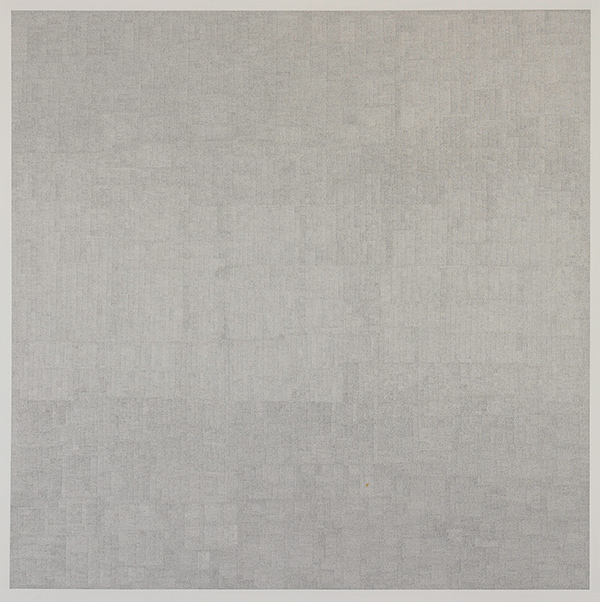
In El Hanani’s case, this is a unique approach to abstraction that allows him to reconcile terms usually seen as opposites—modern and ancient, concept and practice, inscription and design. Take Tehilim (1978–1981), one of El Hanani’s biggest (fifty inches by fifty inches) and most intricate works, which is in the collection of the Metropolitan Museum of Art. Its countless fine lines appear from a distance as a dark gray mist in which lighter gray patches seem to be emerging, struggling to coalesce into a horizontal band across the middle third of the canvas. Perhaps he regards the drawing as a work of praise, building meaning through the repetition of lines in the same way that a pious Jew or Christian recites the Psalms again and again in daily prayer.
In some of El Hanani’s most movingly austere work, the building blocks for larger patterns are Hebrew letters themselves, rendered almost illegibly minute. In The Horizontal Hebrew Alphabet, they are used to create a stack of horizontal bands that gradually shift from dense and dark at the bottom of the canvas to sparse and light at the top. If the elements used to build the image were dots or random marks, it would appear purely graphic, a study in contrasting tones and textures. By using Hebrew letters, however, El Hanani places the work into conversation with texts as well as images. “Read” from top to bottom, The Horizontal Hebrew Alphabet might evoke the account of creation in Genesis, when God separates the layers of the world according to their density—sky, ocean, land. Read from bottom to top, it could be a kabbalistic image, illustrating the sefirot, that is, the stages by which the Godhead transitions from the incomprehensible and infinite Ein Sof to the Shekhina, the divine presence that watches over this world.
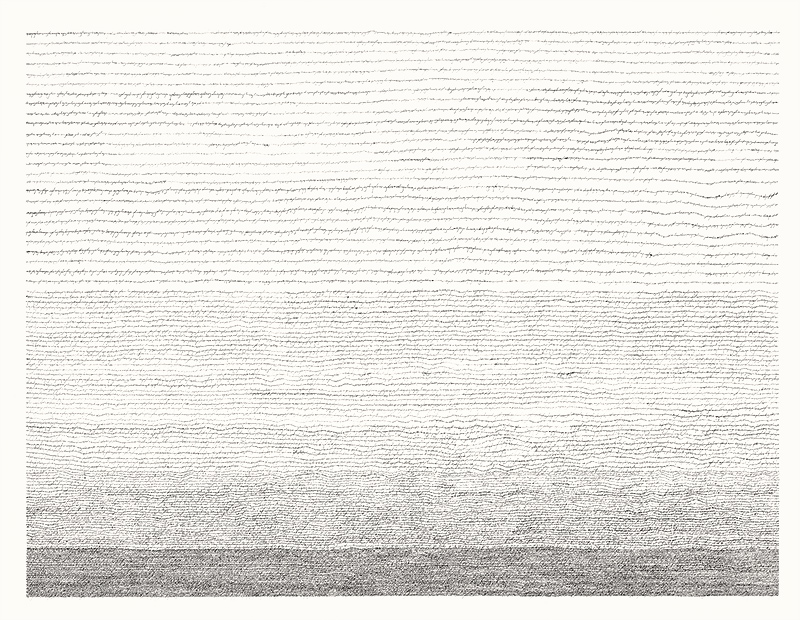
Whether he is using letters or lines, El Hanani consciously situates his work within the long history of Jewish micrography. In the Middle Ages, Jewish scribes began to decorate biblical manuscripts with images and designs made of very small Hebrew letters. The way they used the technique mirrored the larger visual cultures in which they were embedded. Ashkenazi scribes in Christian Europe, where representational art was used for sacred purposes, turned strings of letters into the outlines of animals and plants. Sephardi scribes, living in Islamic cultures where representation was taboo, used letters to create aniconic patterns and designs. As a Moroccan Jewish abstractionist, then, El Hanani belongs to an old tradition.
Like the work of those scribes, El Hanani’s artistic practice is a devotional act. It is crucial to the effect and meaning of his work that all his inscriptions are made by hand, using pen and ink on paper or canvas. For more than forty years, he has worked eight, ten, twelve hours a day, taking breaks every ten minutes to spare his eyesight—he uses no artificial magnification. A Torah scroll contains more than three hundred thousand letters and usually takes eighteen months to write; Tehilim took El Hanani twice that long.
El Hanani has stuck to his self-imposed discipline even though all worldly incentives argue against it. He can produce only a few drawings a year; to guard his working time, he finds ways to hold the world at bay. He must be one of the last New Yorkers who does not use a computer or have an email address, much less a social media presence. He still lives and works in the same loft he moved into forty-six years ago.
Philosophically, too, El Hanani has quietly defied his times. When he began to chart his artistic course in the 1970s, conceptualists and minimalists were insisting on the separation of idea from execution. Once an artist had the idea for a work, it didn’t matter who turned it into a physical object: Warhol’s screen prints and Judd’s boxes could be produced by anonymous craftsmen, like the apprentices in the atelier of a Renaissance master. As Sol LeWitt wrote in 1967, “The idea becomes a machine that makes the art.”
LeWitt is one of the clearest influences on El Hanani, as in his Broken Lines, which evokes LeWitt’s famous wall drawings. But the painting also shows how decisively the artists diverge. LeWitt’s wall drawings can be and have been made by anyone who follows the artist’s instructions. Sometimes those instructions are highly constraining, while in other works they are provocatively minimal: the instructions for Wall Drawing 86 read simply, “Ten thousand lines about 10 inches (25 cm) long, covering the wall evenly.” This is a kind of algorithm, and the image that results is appropriately mechanical, with straight edges and precise angles. In Broken Lines, by contrast, the thousands of line segments are jauntily idiosyncratic—less a mechanical blueprint than a box of matches spilled on the ground. The effect, as in all of El Hanani’s work, is totally abstract yet also deeply personal: this particular energy couldn’t be generated by any other hand.
Ironically, the postmodernist removal of the artist from the artwork can also be understood as a return of premodern ideas about design and execution, particularly in a Jewish context. According to Jewish law, every adult man is obligated to write a Torah scroll at least once in his lifetime; in practice, the task is delegated to a professional scribe or sofer. Somewhat like the executor of a LeWitt drawing, a sofer follows strict rules that leave little room for individual interpretation.
If LeWitt used premodern methods for postmodern ends, however, El Hanani keeps faith with modernism’s heroic efforts and baffled quests. Like Pollock’s action paintings, El Hanani’s drawings are records of a process as much as they are executions of a design. But in this case, the action has been pared down and etherealized—not stalking the canvas and spurting paint onto it but coaxing a form into being with patient, controlled strokes. And while both processes lead to abstraction, their moods are very different: Pollock’s work seems to angrily reject representation, while El Hanani’s is wistful for it. It is the difference, perhaps, between a painting that fails to become an image and a drawing that fails to become a text.
The idea of a scribe who, like El Hanani, sets to work every day but never produces the same text twice—or never produces a legible text at all—would have appealed to Franz Kafka, and, indeed, Kafka is another important reference point for this artist. In “An Imperial Message,” a microstory first published in a Prague Jewish magazine in 1919, Kafka addresses the reader directly: “The emperor—it is said—sent to you, the one apart, the wretched subject, the tiny shadow that fled far, far from the imperial sun, precisely to you he sent a message from his deathbed.” But the messenger carrying his words has so far to travel, so many obstacles to overcome, that it would take him thousands of years to arrive. All you can do is “sit at your window and dream of the message,” knowing you will never receive it. If the “you” of Kafka’s story were given ink, paper, and endless time, perhaps he or she would produce drawings like El Hanani’s, using the instruments of writing to create something intricate and illegible but unmistakably charged with meaning.
Suggested Reading
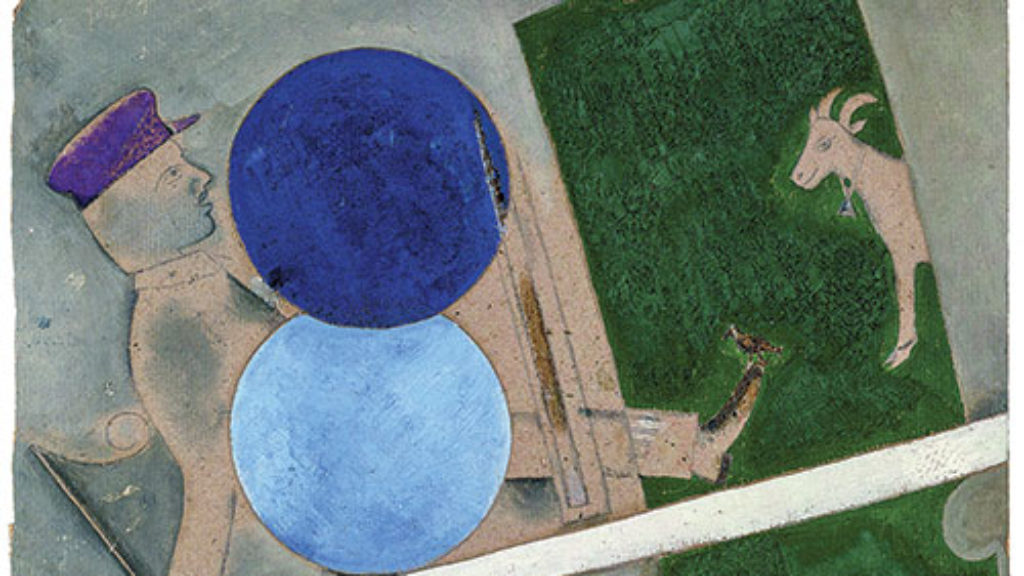
Art Over Vitebsk
After the revolution, Marc Chagall—somewhat implausibly—became plenipotentiary for the affairs of art in the province of Vitebsk. Against all probability, the avant-garde bloomed in a provincial Russian city dominated by Jewish culture.
Yosl Bergner’s Jewish-Israeli Genius
Yosl Bergner once said that “whatever colors I pour onto the canvas, they come out gray.” His grayscale paintings are stunning, but he paints in gorgeous color too. A personal memoir of a 94-year-old genius.
Visualizing Hasidism
Everything contains sparks of the divine, the Ba’al Shem Tov and his disciples taught; therefore, everything—even material things—can be sanctified.
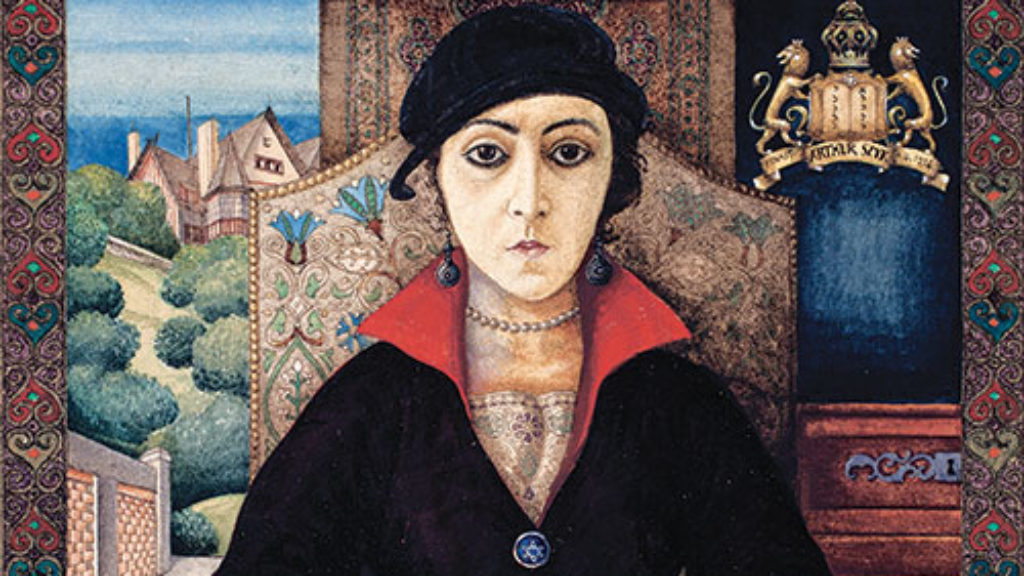
Ink and Blood
Arthur Szyk may well be the only great Jewish artist whose work countless people recognize simply because they have attended a Passover Seder. Less well known are the explicit connections between the Egyptian pharaoh and Hitler that Szyk had embedded in his original version of the haggadah he created in the 1930s.
Comments
You must log in to comment Log In